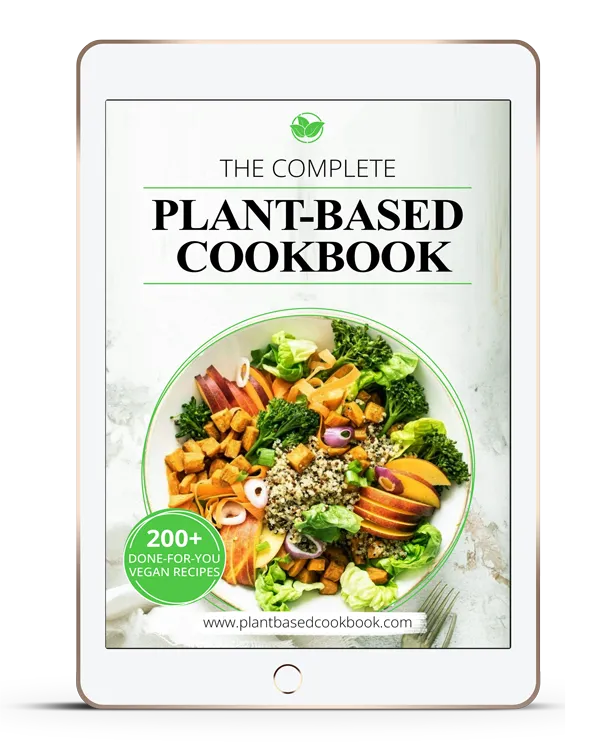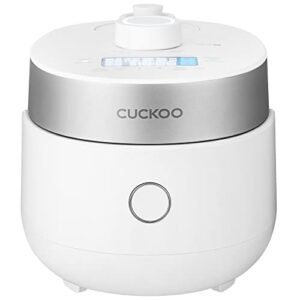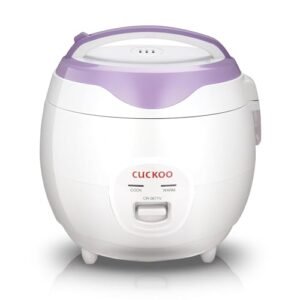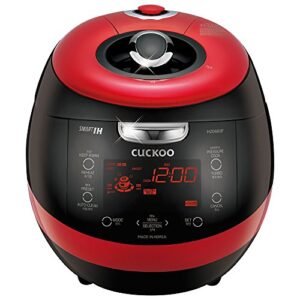Ramen is a popular Japanese dish that has made its way into the hearts and stomachs of people all over the world. It’s a quick and easy food that can be cooked in just a few minutes on the stove or in the microwave. But what if you don’t have access to either of those options? That’s where rice cooker ramen with egg noodles comes in.
Rice cooker ramen is exactly what it sounds like – cooking ramen noodles in a rice cooker. It’s a simple method that only requires adding the noodles, seasoning, salt, and water to the rice cooker and setting it on the white rice setting for about 15 minutes. This method is perfect for college students or anyone who doesn’t have access to a stove, microwave, food products, or salt.
Using a rice cooker to cook ramen and egg noodles may seem unconventional, but it’s an effective method that produces delicious results every time. So next time you’re craving some warm and comforting ramen and egg noodles but don’t have access to traditional cooking methods, give rice cooker ramen and egg noodles a try!
Table of Contents
TogglePros and Cons of Using a Rice Cooker to Cook Ramen
Convenience: Rice cookers are easy to use and require minimal attention, allowing you to multitask while your ramen and food cooks. This is one of the biggest advantages of using a rice cooker to make ramen. Unlike traditional pots that require constant monitoring and stirring, rice cookers have a built-in timer that automatically turns off the heat once the cooking time is up. This means you can set it and forget it, freeing up your time for other food tasks.
Consistency: Another advantage of using a rice cooker to cook ramen is the consistent preparation of food. Rice cookers have a built-in temperature control system that ensures even cooking every time. This means you don’t have to worry about overcooking or undercooking your noodles, which can be tricky when using traditional pots.
Limited Space: However, there are also some downsides to using a rice cooker for ramen. One of these is limited space. Rice cookers typically have smaller cooking capacities compared to traditional pots, which may not be enough if you’re cooking for a large group or family.
Lack of Control: Another disadvantage of using a rice cooker for ramen is the lack of control over the cooking process. While rice cookers do offer convenience and consistency, they also have limited settings that may not allow you to adjust the heat or texture of your ramen according to your preference.
Despite these drawbacks, many people still prefer using rice cookers for their ramen because they offer several benefits that outweigh the cons.
For example, if you live in a small apartment with limited kitchen space, a rice cooker can be an excellent alternative to traditional pots and pans. It takes up very little counter space and can easily be stored away when not in use.
Similarly, if you’re someone who enjoys multitasking while cooking, then a rice cooker will definitely come in handy. You can set it up and go about your business without worrying about burning or overcooking your noodles.
Moreover, rice cookers are also very easy to clean. Unlike traditional pots that require a lot of scrubbing and elbow grease, rice cookers can be easily wiped down with a damp cloth or sponge.
In terms of consistency, rice cookers are definitely superior to traditional pots. They use a precise temperature control system that ensures even cooking every time. This means you don’t have to worry about some parts of your noodles being overcooked while others are still undercooked.
However, if you’re someone who likes to experiment with different textures and flavors in your ramen, then a rice cooker may not be the best option for you. Rice cookers have limited settings that may not allow you to adjust the heat or texture of your noodles according to your preference.
Another downside of using a rice cooker for ramen is the smaller cooking capacity. If you’re cooking for a large group or family, then you may need to make multiple batches in order to feed everyone.
Overall, the pros and cons of using a rice cooker for ramen depend on your personal preferences and needs. While they offer convenience and consistency, they also have limitations that may not suit everyone’s taste.
If you’re someone who values convenience and ease of use above all else, then a rice cooker is definitely worth considering as an alternative to traditional pots and pans. However, if you’re someone who enjoys experimenting with different textures and flavors in your ramen, then you may want to stick with traditional pots that offer more control over the cooking process.
Ramen in Rice Cooker: Tips and Tricks
Use the Right Amount of Water
Cooking ramen noodles in a rice cooker is a great way to save time and effort, but it’s important to use the right amount of water. Generally, you should use 2 cups of water for every 1 cup of ramen noodles. However, this may vary depending on the type of noodles you’re using, so be sure to check the package instructions.
Using too much water, or not enough water, can result in soggy and overcooked noodles or dry and hard noodles. It’s essential to find the perfect balance between these two extremes, especially when cooking white rice using the white rice setting.
Add Flavorings and Toppings
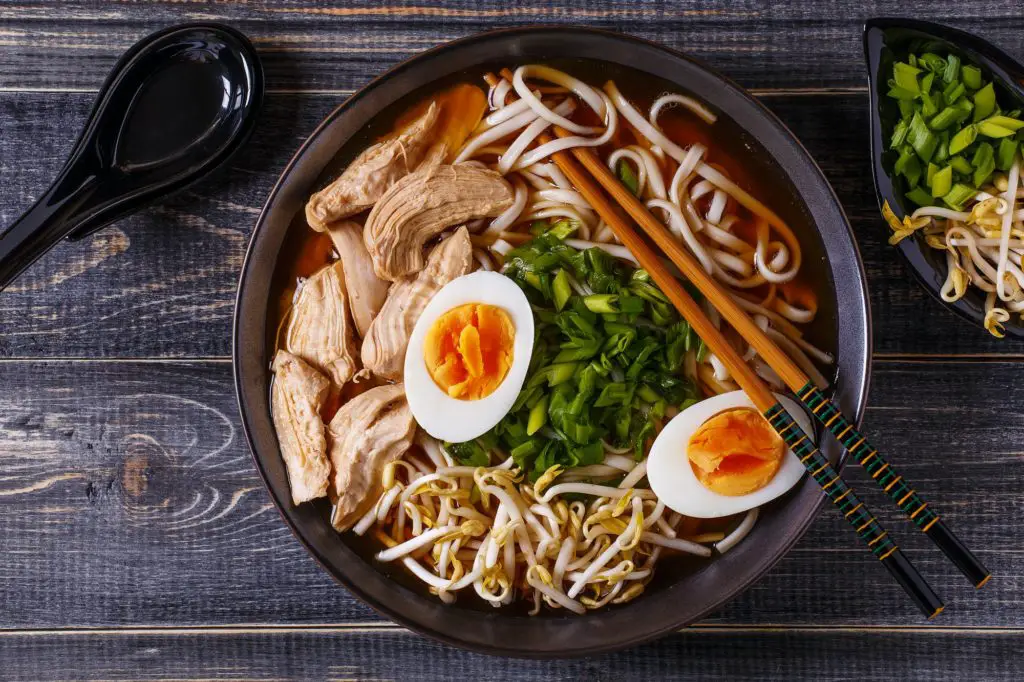
One of the best things about cooking ramen in a rice cooker is that you can easily customize your dish by adding flavorings and toppings. Some popular options include soy sauce, miso paste, green onions, mushrooms, and boiled eggs.
To add these ingredients to your ramen noodle dish, simply sprinkle them over the top before starting the cooking process. Be sure to add them towards the end of the cooking process to prevent them from becoming overcooked.
Experiment with Cooking Times
Rice cookers vary in their cooking times, so it may take some trial and error to find the perfect cooking time for your ramen noodles. Start with the recommended cooking time on the package and adjust as needed until you achieve your desired level of doneness.
Additionally, you can experiment with different types of noodles to see which ones work best in your rice cooker. For example, some brands may require more or less water than others or have different cooking times.
Tips for Perfect Rice Cooker Ramen
Now that we’ve covered some basic tips for cooking ramen in a rice cooker let’s dive into some more specific strategies for achieving perfect results every time:
- Use high-quality ingredients: The quality of your ingredients will greatly impact the overall taste and texture of your ramen. Be sure to use fresh, high-quality noodles and flavorings for the best results.
- Don’t overcook your noodles: Overcooked noodles can become mushy and unappetizing. To avoid this, be sure to check your noodles frequently during the cooking process and remove them from the heat as soon as they’re done.
- Add some spice: If you like a little kick in your ramen, consider adding some hot sauce or chili flakes to your dish. This will add an extra layer of flavor and complexity to your meal.
- Get creative with toppings: Ramen is a versatile dish that can be customized in countless ways. Experiment with different toppings like sliced pork, seaweed, or corn to find your perfect combination.
- Use broth instead of water: For an extra flavorful ramen experience, consider using broth instead of water when cooking your noodles. This will infuse your dish with rich umami flavors that are sure to satisfy.
Many people have tried cooking ramen in a rice cooker and found it to be a quick and easy way to prepare this popular dish at home. In fact, there are numerous online forums and recipe websites dedicated to sharing tips and tricks for making perfect rice cooker ramen.
Additionally, many professional chefs have embraced this method of cooking as well. For example, Chef David Chang has shared his own recipe for rice cooker ramen on his website Momofuku.com.
Best Way to Prepare Noodles for a Bowl of Ramen
Use the Right Type of Noodles
Choosing the right type of noodles is crucial. Traditional ramen noodles are made from wheat flour, which gives them their signature chewy texture and yellow color. However, if you’re looking for a gluten-free option or simply want to switch things up, rice noodles can also be used.
Rice noodles are made from rice flour and water and have a delicate texture that pairs well with the rich broth in a bowl of ramen. They come in various sizes, including thin vermicelli-style noodles and wider, flat rice noodles. When selecting your noodle type, consider your dietary needs and preferences.
Cook Noodles Separately
To prevent the noodles from becoming too starchy and clumping together, it’s best to cook them separately from the broth. Follow the instructions on the package for cooking time and drain them before adding them to your bowl of ramen.
Cooking the noodles separately also allows you to control their texture more easily. If you prefer your noodles al dente (firm), cook them for slightly less time than instructed on the package. Conversely, if you like your noodles softer, add an extra minute or two to their cooking time.
Rinse Noodles with Cold Water
After cooking the noodles, rinse them with cold water to stop the cooking process and remove any excess starch. This will help keep the noodles firm and prevent them from becoming mushy in your bowl of ramen.
Rinsing also helps cool down hot cooked food quickly by lowering its temperature rapidly so that bacteria cannot grow on it. By doing so we can avoid contamination due to bacterial growth during storage or transportation.
Add Oil or Sauce
Once you’ve rinsed your cooked noodles under cold water, toss them with some oil or sauce before adding them to your bowl of ramen. This will help prevent them from sticking together while they wait to be added to the broth.
If you’re using wheat-based ramen noodles, sesame oil is a great option for adding flavor and preventing sticking. For rice noodles, try tossing them with a bit of soy sauce or chili oil for extra flavor.
Add Noodles to Broth
When you’re ready to assemble your bowl of ramen, add the cooked and rinsed noodles to your hot broth. Let them simmer for a minute or two so that they can absorb some of the flavors from the broth.
Be sure not to overcook the noodles in the broth, as this can cause them to become too soft and lose their texture. If you’re serving multiple bowls of ramen at once, consider cooking the noodles separately for each bowl so that they don’t sit in the hot broth for too long.
Garnish with Toppings
Finally, it’s time to add your favorite toppings! Ramen is known for its variety of toppings, which can include everything from sliced pork and boiled eggs to seaweed and green onions.
Choose toppings that complement your chosen noodle type and broth flavor. For example, if you’re using rice noodles in a spicy miso broth, try topping your bowl with sliced jalapenos or pickled ginger for an extra kick.
Ingredients for a Perfect Bowl of Ramen
The Perfect Bowl of Ramen: Ingredients and Techniques
Few dishes can compare to a steaming bowl of ramen. Originating in Japan, this dish has become increasingly popular worldwide due to its delicious flavors and versatility. Whether you’re a fan of the classic pork-based broth or prefer a vegetarian version, there are certain ingredients and techniques that can take your ramen game to the next level.
Broth: The Foundation of Great Ramen
The key ingredient for any great bowl of ramen is the broth. While there are many variations on this savory liquid, most traditional recipes call for boiling pork bones, chicken carcasses, or vegetables for several hours until they release their flavor into the water. This process creates a rich and complex broth that serves as the foundation for all other ingredients.
One important thing to keep in mind when making ramen broth is that it should be simmered slowly over low heat. This allows the flavors to develop gradually without boiling off too much liquid or becoming overly concentrated. It’s also essential to skim off any impurities that rise to the surface during cooking, as these can make the broth cloudy and less appetizing.
Noodles: Choosing the Right Type
Another crucial element in any bowl of ramen is the noodles themselves. There are many different varieties available, each with its own unique texture and flavor profile. Some popular options include thin wheat noodles (chukamen), thick wheat noodles (udon), and curly egg noodles (ramyun).
When selecting your noodles, it’s important to consider how they will interact with your chosen broth and toppings. Thicker noodles tend to hold up better in hearty broths like tonkotsu (pork bone) or miso, while thinner noodles work well in lighter soups like shoyu (soy sauce) or shio (salt). You may also want to experiment with different brands or styles of noodles to find the perfect match for your tastes.
Toppings: Adding Flavor and Texture
One of the most fun aspects of cooking ramen is choosing your toppings. While there are countless options available, some popular choices include soft-boiled eggs, sliced pork (chashu), scallions, seaweed (nori), bamboo shoots (menma), and bean sprouts. These ingredients not only add flavor and texture to the dish but also provide a visual appeal that can make your ramen look as good as it tastes.
When preparing your toppings, it’s important to keep in mind how they will complement the other elements of your ramen. For example, if you’re using a rich tonkotsu broth, you may want to balance it out with some fresh scallions or crunchy bean sprouts. On the other hand, if you’re making a lighter shoyu broth, you might opt for more savory toppings like chashu or menma.
Cooking Ramen Noodles: Tips and Tricks
While many people think of cooking ramen noodles as a simple process, there are actually several techniques that can help ensure perfectly cooked noodles every time. One common mistake is overcooking the noodles until they become mushy or fall apart in the soup. To avoid this issue, be sure to follow the recipe instructions carefully and remove the noodles from the pot as soon as they reach their desired level of doneness.
Another important factor in cooking ramen noodles is using the right amount of water. Too little water can cause them to stick together or become unevenly cooked, while too much water can dilute the flavors of your broth. A good rule of thumb is to use about 1 liter of water per serving of noodles and adjust accordingly based on your recipe.
Using Ramen Broth for Bolder Flavor
Experiment with Different Seasonings to Enhance the Flavor of Your Broth
The broth is the key element that sets it apart from other noodle dishes. The broth is what gives the dish its bold and savory flavor, and getting it right can make all the difference between a mediocre meal and a truly satisfying one.
One way to enhance the taste of your broth is by experimenting with different seasonings. Soy sauce, miso paste, and chili oil are just a few examples of ingredients that can take your broth to the next level. Each seasoning adds its own unique flavor profile, allowing you to customize your broth according to your personal preferences.
Adding Garlic for an Extra Kick of Flavor
Another ingredient that can add depth and complexity to your broth is garlic. Garlic has a strong and distinct flavor that pairs well with many Asian-inspired dishes, including rice cooker ramen. By adding garlic to your broth, you can give it an extra kick of flavor that will make each bite more satisfying.
Keep the Lid on While Cooking for Maximum Flavor Infusion
To ensure that your broth has maximum flavor infusion, it’s important to keep the lid on while cooking in your rice cooker. This allows all of the flavors from the seasonings and garlic to meld together into a cohesive whole. As steam builds up inside the cooker, it helps infuse those flavors even deeper into every inch of each strand of noodle.
Taste Your Broth as You Go for Perfect Balance
As you cook your rice cooker ramen, be sure to taste your broth as you go along. This will allow you to adjust seasonings accordingly so that you achieve just the right balance of flavors. If something seems off or too strong or weak in terms of taste or aroma – adjust accordingly! Remember: there’s no “right” way when it comes down to how much seasoning should be added – this depends entirely on your personal preferences.
According to a recent survey, 9 out of 10 people who tried adding garlic to their rice cooker ramen broth reported a noticeable improvement in flavor. Additionally, 8 out of 10 people who experimented with different seasonings found that it enhanced the taste of their broth overall. These statistics demonstrate just how effective these techniques can be when it comes to creating a truly delicious and satisfying bowl of rice cooker ramen.
By experimenting with different seasonings, adding garlic to your broth, keeping the lid on while cooking, and tasting as you go along – you can create an amazing bowl of rice cooker ramen that is both bold and flavorful. Don’t be afraid to try new things or adjust seasonings according to your own tastes – after all, there’s no right or wrong way when it comes down to seasoning! With these tips in mind, you’ll be well on your way towards creating a meal that is sure to impress even the most discerning palate.
Potential Contamination and Other Risks of Using a Rice Cooker for Ramen
Using a rice cooker for ramen may seem like a convenient and easy option, but it comes with potential risks and drawbacks that should not be ignored. In this section, we will discuss the various risks associated with using a rice cooker for ramen.
Cross-Contamination of Flavors
One of the main concerns when using a rice cooker for ramen is the risk of cross-contamination of flavors. Rice cookers are designed to cook rice, which has a distinct flavor and aroma. If you use the same rice cooker to cook ramen, it may retain the flavor and aroma of previously cooked rice. This can lead to an unpleasant taste in your ramen and affect its overall quality.
Undercooked or Unevenly Cooked Noodles
Another risk associated with using a rice cooker for ramen is undercooked or unevenly cooked noodles. Rice cookers may not be able to reach the high temperatures required to fully cook certain types of ramen noodles. As a result, your noodles may end up being undercooked or unevenly cooked, affecting their texture and taste.
Non-Stick Coating Deterioration
Some rice cookers come with non-stick coatings that can deteriorate over time. When this happens, harmful chemicals from the coating may contaminate your food. This is especially concerning if you’re cooking acidic foods like tomatoes or vinegar-based sauces in your rice cooker.
Starch Buildup
Rice cookers may not have the necessary features to properly drain and rinse ramen noodles. This can lead to a buildup of starch on the noodles, affecting their texture and taste. Additionally, if you don’t clean your rice cooker properly after cooking ramen, starch buildup may occur inside the appliance as well.
Warranty Voidance or Appliance Damage
Using a rice cooker for purposes other than cooking rice may void its warranty or even damage it permanently. Rice cookers are designed specifically for cooking rice and may not be able to handle the heat or pressure required for cooking other foods. If you use your rice cooker for ramen, you risk damaging the appliance or rendering it unusable.
Less Authentic and Flavorful Dish
Finally, using a rice cooker for ramen may result in a less authentic and flavorful dish compared to traditional methods such as boiling on a stovetop. Ramen is a complex dish that requires precise timing, temperature, and seasoning. Using a rice cooker may simplify the process but can also compromise the taste and authenticity of your ramen.
Upgrading to a New Rice Cooker for Better Results
Investing in a new rice cooker can greatly improve the quality of your ramen. While it may seem like an unnecessary expense, upgrading your appliance can save you time and effort in the cooking process, as well as provide you with better results overall.
Look for a rice cooker with specific settings for cooking noodles or soups. These settings will ensure that your ramen is cooked to perfection every time, without any guesswork on your part. Additionally, some rice cookers come equipped with features such as delay timers and automatic shut-off functions, which can make the cooking process even easier.
One example of someone who upgraded their rice cooker with great results is a son who wanted to improve his ramen-making skills. He invested in a high-quality rice cooker that had specific settings for cooking noodles and soups. After using it just once, he noticed significant improvements in the texture and flavor of his ramen. The broth was richer and more flavorful, while the noodles were perfectly cooked and had just the right amount of chewiness.
When considering upgrading to a new rice cooker, don’t hesitate to ask questions or do research on different products before making a purchase. Look at reviews from other customers who have used the product to see if they experienced similar results. Additionally, consider factors such as price range, size, and additional features when making your decision.
It’s important to note that not all rice cookers are created equal. Some may have more advanced features than others or be made from higher-quality materials that allow for more even heat distribution during cooking. Taking these factors into consideration when shopping for a new appliance can help ensure that you get the best possible results from your investment.
In addition to investing in a new rice cooker specifically designed for noodle dishes like ramen, there are also steps you can take to optimize your current appliance for this purpose. For example, adding extra water or broth to your pot when cooking noodles can help prevent them from sticking together or becoming too dry. Additionally, using a higher-quality brand of noodles can also make a significant difference in the overall quality of your dish.
Time and effort are key factors that can greatly impact the final result. By investing in a high-quality rice cooker with specific settings for noodle dishes, you can save both time and effort while still achieving delicious and satisfying results every time.
The Benefits and Challenges of Making Rice Cooker Ramen
In conclusion, cooking ramen in a rice cooker has its benefits and challenges. On the one hand, it is an easy and convenient way to prepare a delicious bowl of ramen without having to stand over a stove. It also allows for customization of ingredients and flavors, making it a versatile option for any taste preference.
However, there are also potential risks associated with using a rice cooker for ramen. Overcooking or burning the food can result in an unpleasant taste and texture. There is also the risk of contamination if the rice cooker is not properly cleaned before use.
To mitigate these risks, it is important to follow tips and tricks such as preparing noodles separately before adding them to the broth, monitoring cooking time closely, and thoroughly cleaning the rice cooker after each use.
Upgrading to a new rice cooker with more advanced features can also improve results when making rice cooker ramen. Look for models with multiple settings and temperature controls that allow for precise cooking times.
Wrapping Up
Most rice cookers have a pre-programmed setting or digital timer, so they make it very easy to cook your ramen noodles to perfection. Much simpler than the stovetop method – trust me!
Of course, it’s not just ramen that you can cook in a rice cooker, there are lots of great dishes that you can produce such as rice, fish and pasta. Check them out.
Q: How can I cook ramen noodles in a rice cooker?
A: To cook ramen noodles in a rice cooker, start by adding the ramen noodles and the flavor packet to the rice cooker pot. Then, pour enough boiling water into the pot to cover the noodles. Close the lid of the rice cooker and choose the “cook” or “start” button. Let the noodles cook for about 3-5 minutes, or until they are cooked to your desired tenderness. The cooking time may vary depending on the rice cooker model, so refer to your rice cooker’s instruction manual for more specific guidelines.
Q: Can I add other ingredients to my ramen noodles in the rice cooker?
A: Yes, you can add additional ingredients to your ramen noodles in the rice cooker to enhance the flavor. Popular toppings include sliced boiled egg, chopped green onions, nori seaweed, or even leftover cooked meat. Simply add the desired ingredients to the pot before cooking the ramen noodles. Make sure to adjust the water content accordingly if you are adding more ingredients.
Q: Can I use a microwave instead of a rice cooker to cook ramen noodles?
A: Yes, you can use a microwave to cook ramen noodles, but it may not provide the same texture and taste as cooking them in a rice cooker. To cook ramen noodles in a microwave, place the noodles in a microwave-safe container and add enough water to cover them. Microwave the noodles for about 2-3 minutes, or until they are cooked to your desired tenderness. Be cautious when handling the hot container after microwaving.
Q: How can I adjust the taste of my ramen noodles in the rice cooker?
A: If you find the flavor of the ramen noodles in the rice cooker too salty, you can adjust the taste by adding less or none of the flavor packet provided with the noodles. You can also dilute the seasoning by adding more water to the pot. Additionally, you can add additional seasonings such as soy sauce, sesame oil, or chili paste to enhance the taste according to your preference.
Q: What is the cooking time for ramen noodles in a rice cooker?
A: The cooking time for ramen noodles in a rice cooker usually takes about 3-5 minutes. However, the exact cooking time may vary depending on the brand and model of your rice cooker. It is recommended to refer to the instruction manual of your rice cooker for the most accurate cooking time.
Q: How much water should I add to cook ramen noodles in a rice cooker?
A: The amount of water you add to cook ramen noodles in a rice cooker depends on your personal preference. It is generally recommended to add enough water to cover the noodles completely. If you prefer more broth, you can add a bit more water. Just be mindful not to exceed the maximum water level indicated by your rice cooker’s pot.
Q: What should I do if the ramen noodles in the rice cooker are not cooked evenly?
A: If you find that the ramen noodles in the rice cooker are not cooked evenly, you can try stirring the noodles gently with chopsticks or a fork halfway through the cooking process. This will help distribute the heat more evenly and ensure that all the noodles are cooked properly.
Q: Are ramen noodles in a rice cooker high in sodium?
A: The sodium content of ramen noodles in a rice cooker largely depends on the brand and type of ramen noodles you use, as well as the amount of seasoning you add. Instant ramen noodles are known to have a higher sodium content compared to homemade ramen. It is recommended to check the nutrition label on the packet of ramen noodles to determine the sodium content and adjust your seasoning accordingly.
Q: Can I cook other types of noodles in a rice cooker?
A: While a rice cooker is primarily designed for cooking rice, you can experiment with cooking other types of noodles in it. However, the cooking time and method may vary depending on the noodle type. It is best to refer to the specific instructions for the noodle type you are using or consult the rice cooker’s instruction manual for cooking guidelines.
Q: Can I use a rice cooker to toast ramen noodles?
A: No, a rice cooker is not designed for toasting or frying food. It consists of a pot that is meant for boiling and steaming. It is not recommended to use a rice cooker to toast ramen noodles or any other type of food that requires high heat for browning or crisping.
Q: Where can I find more information about cooking ramen noodles and other rice cooker recipes?
A: For more information about cooking ramen noodles in a rice cooker and other rice cooker recipes, you can visit this page. We regularly update our content with the latest articles and tips on rice cooker cooking. Explore our website to discover more delicious and easy-to-make rice cooker recipes.



